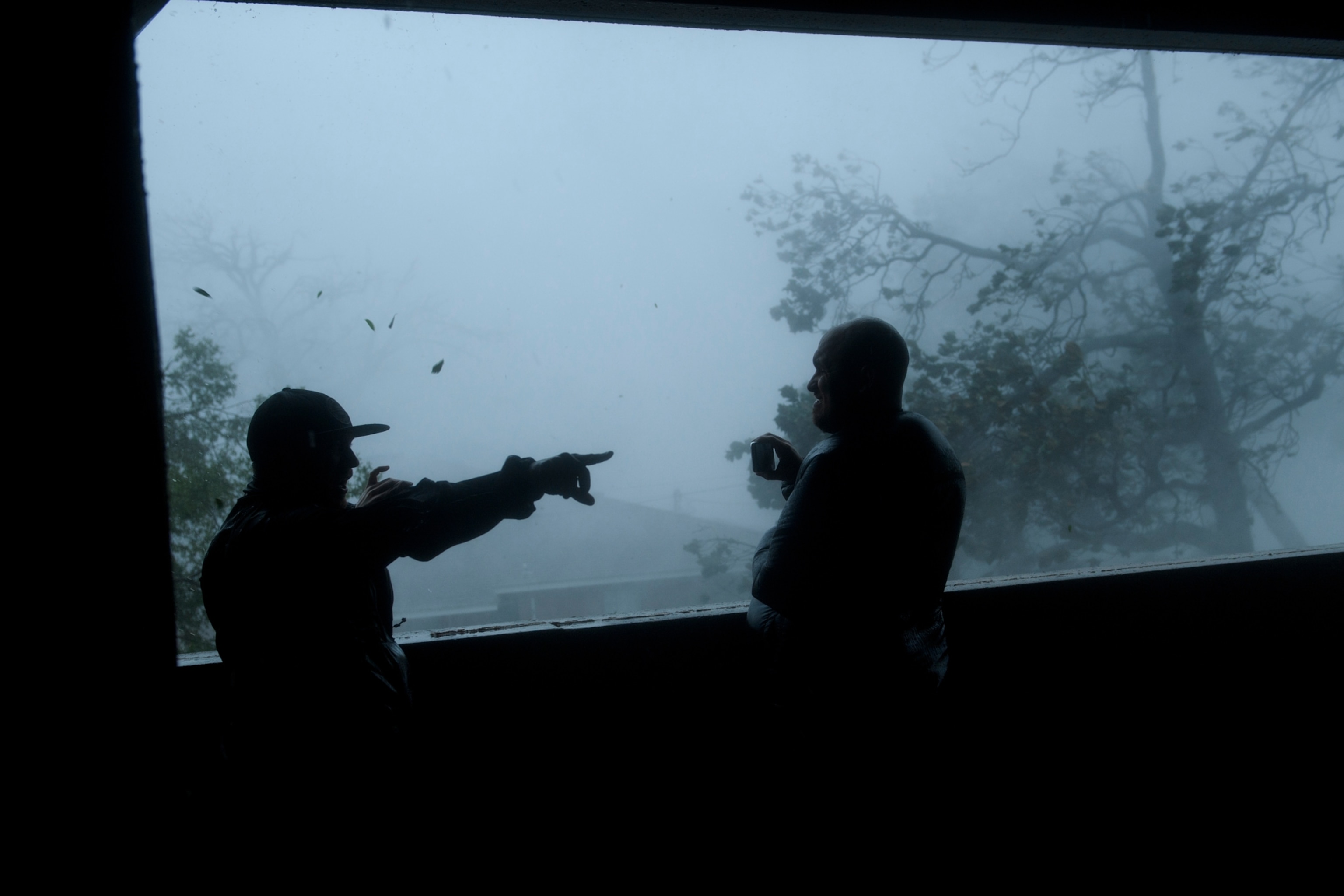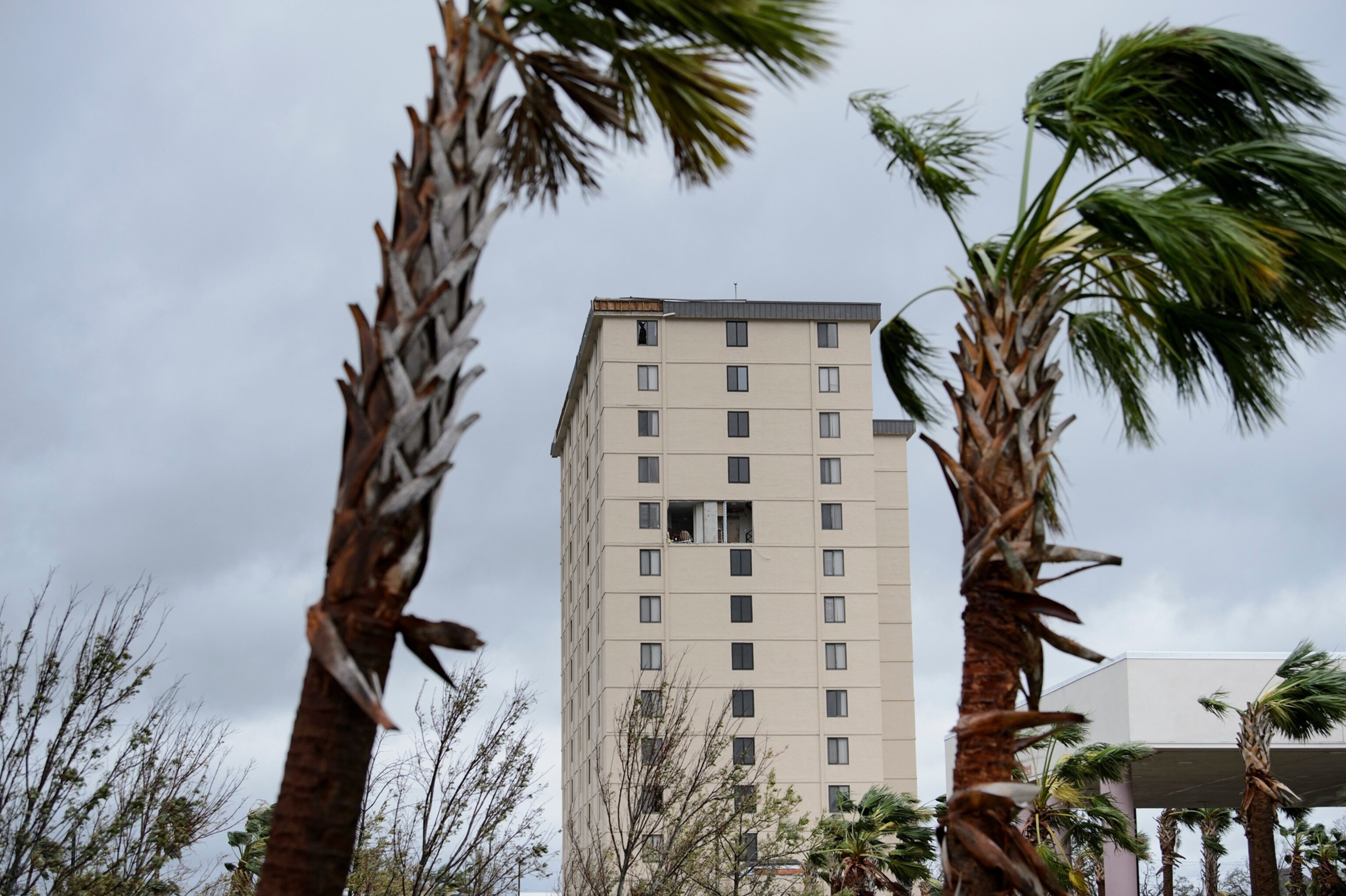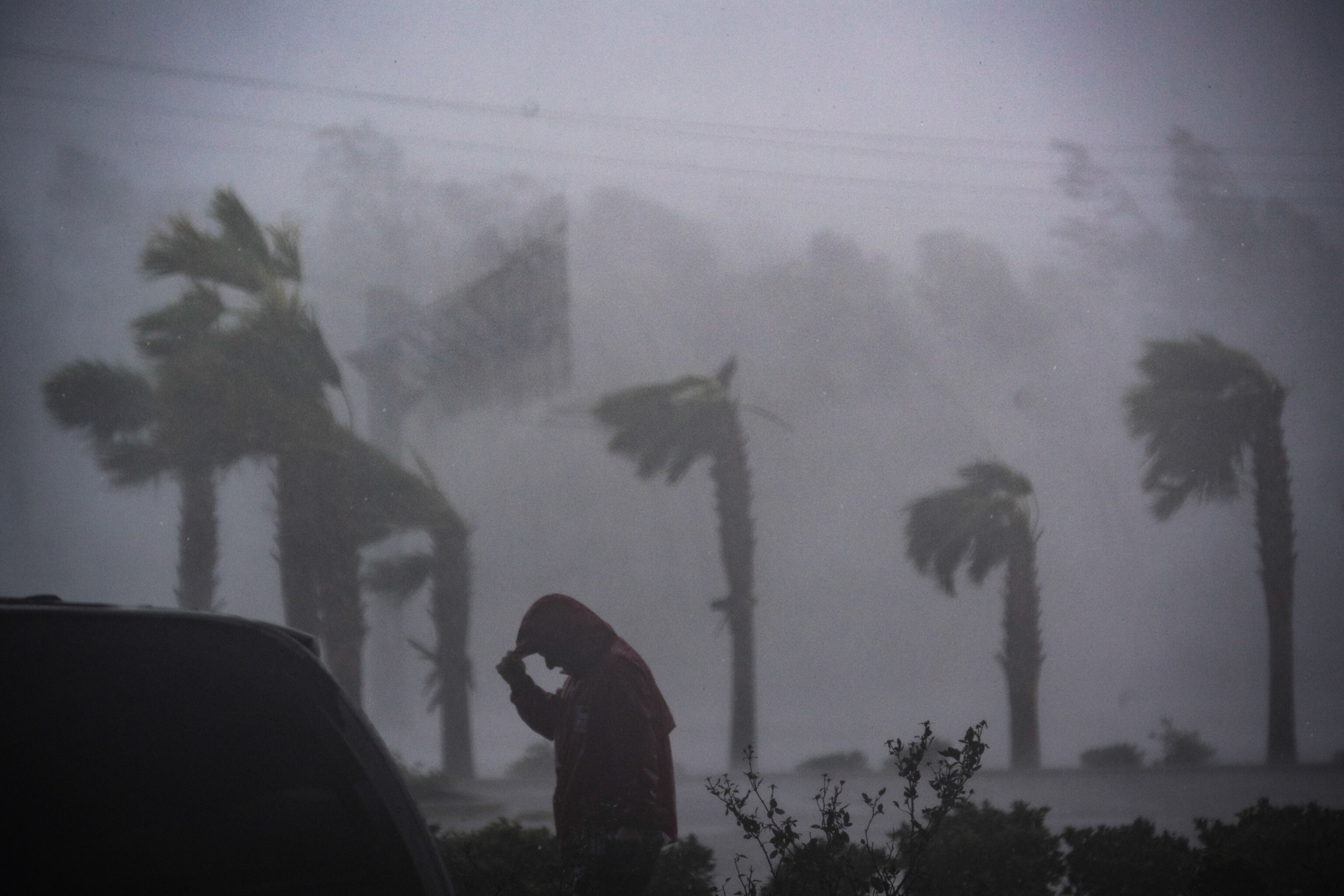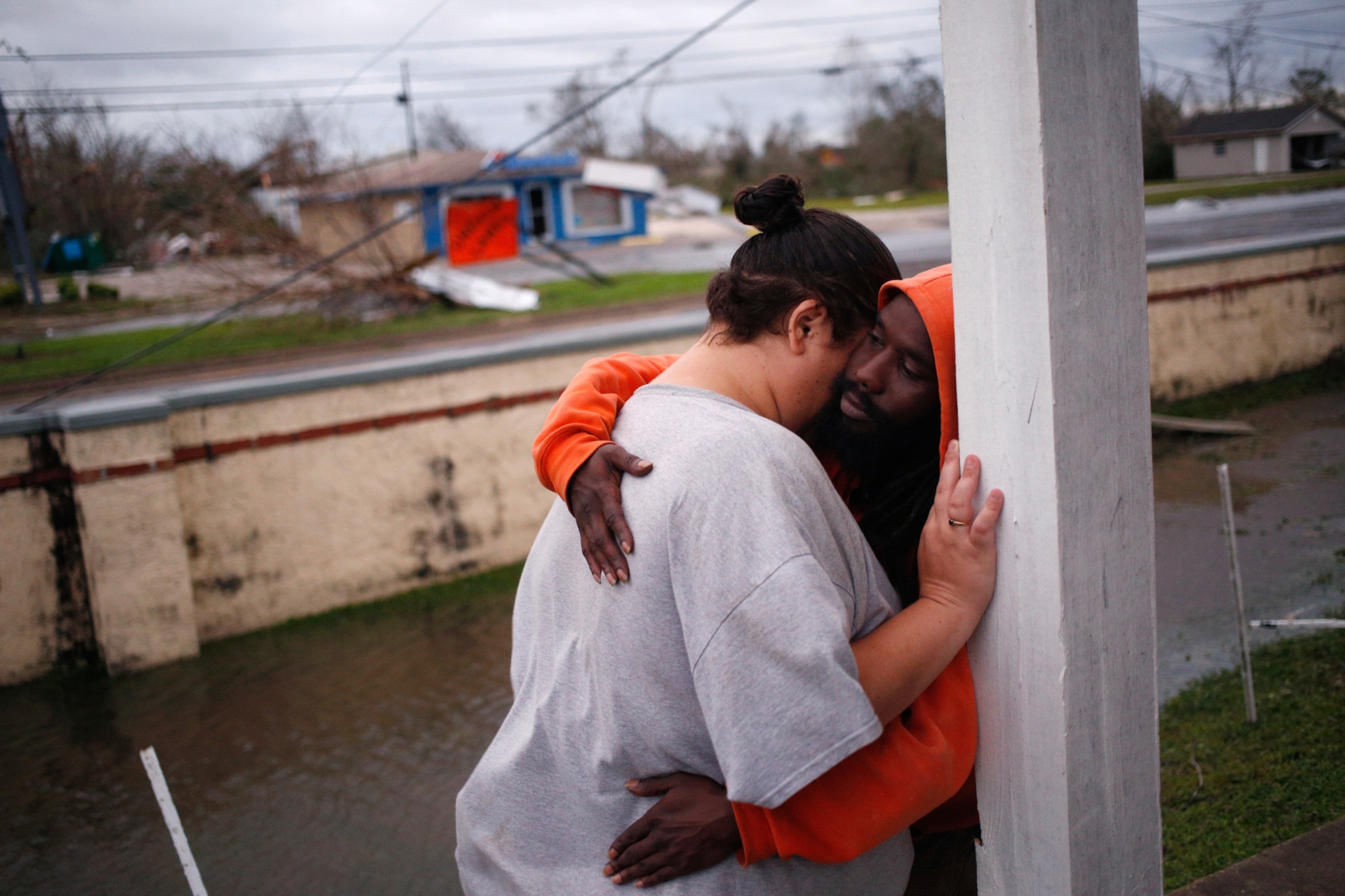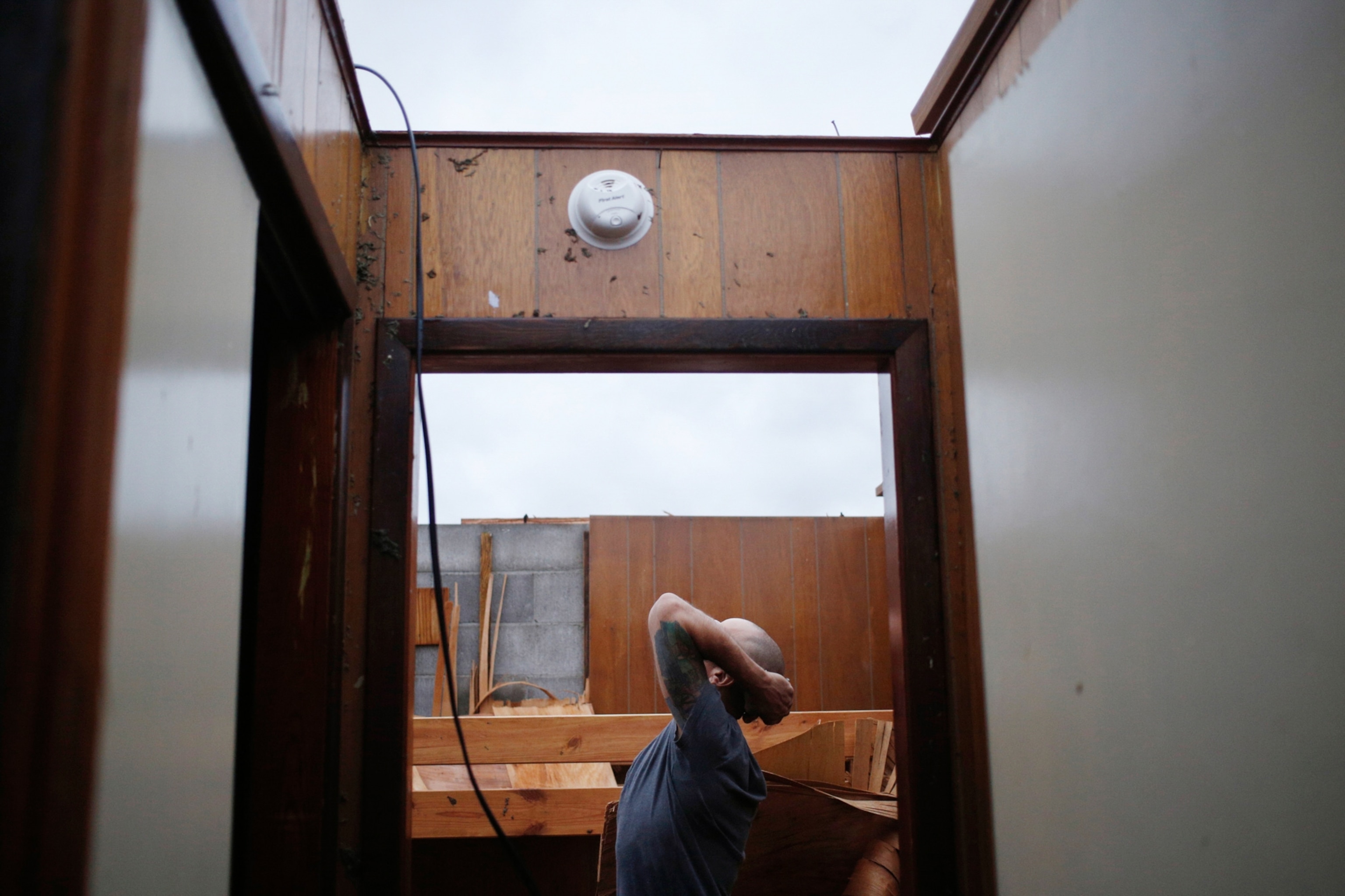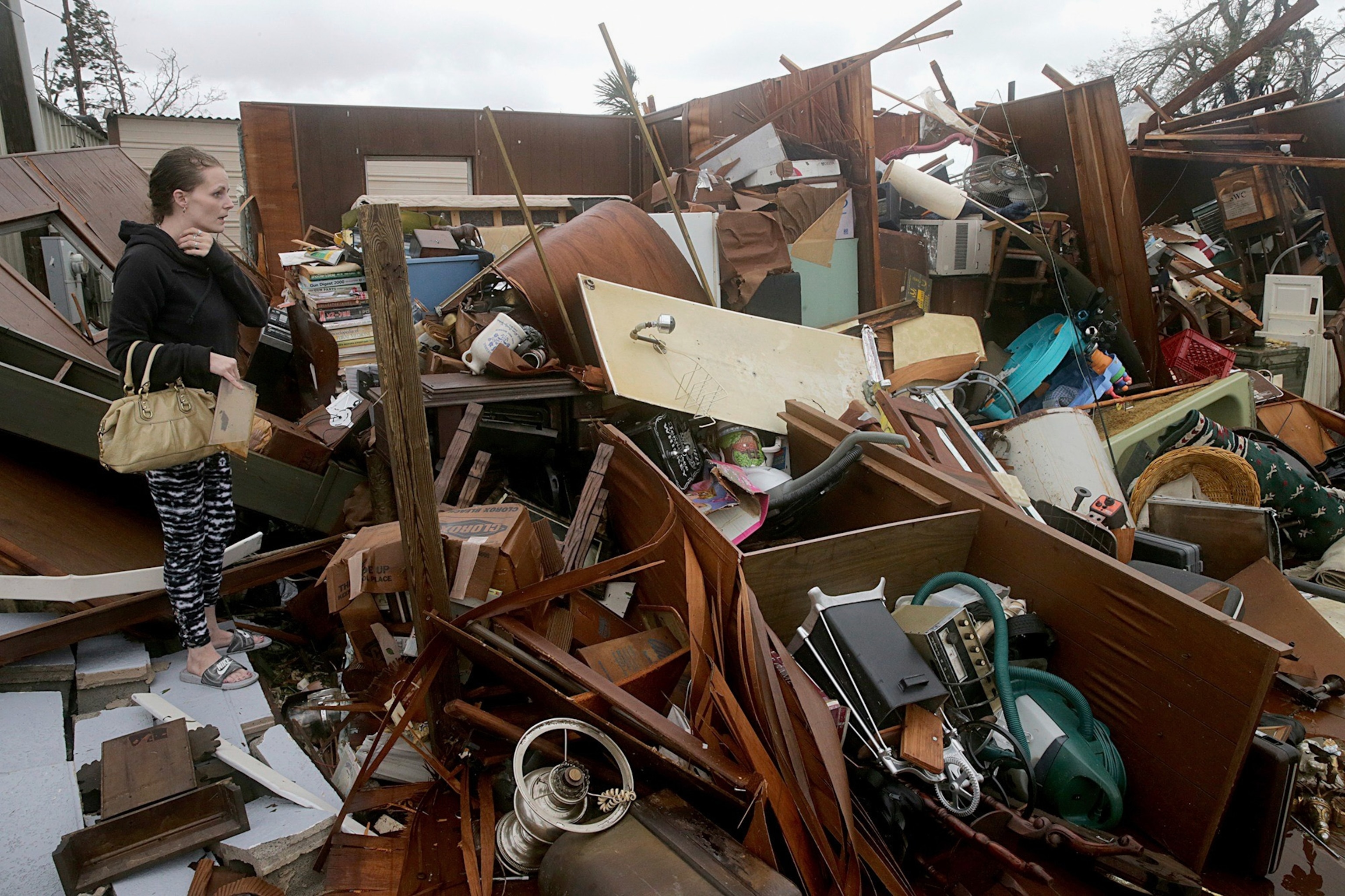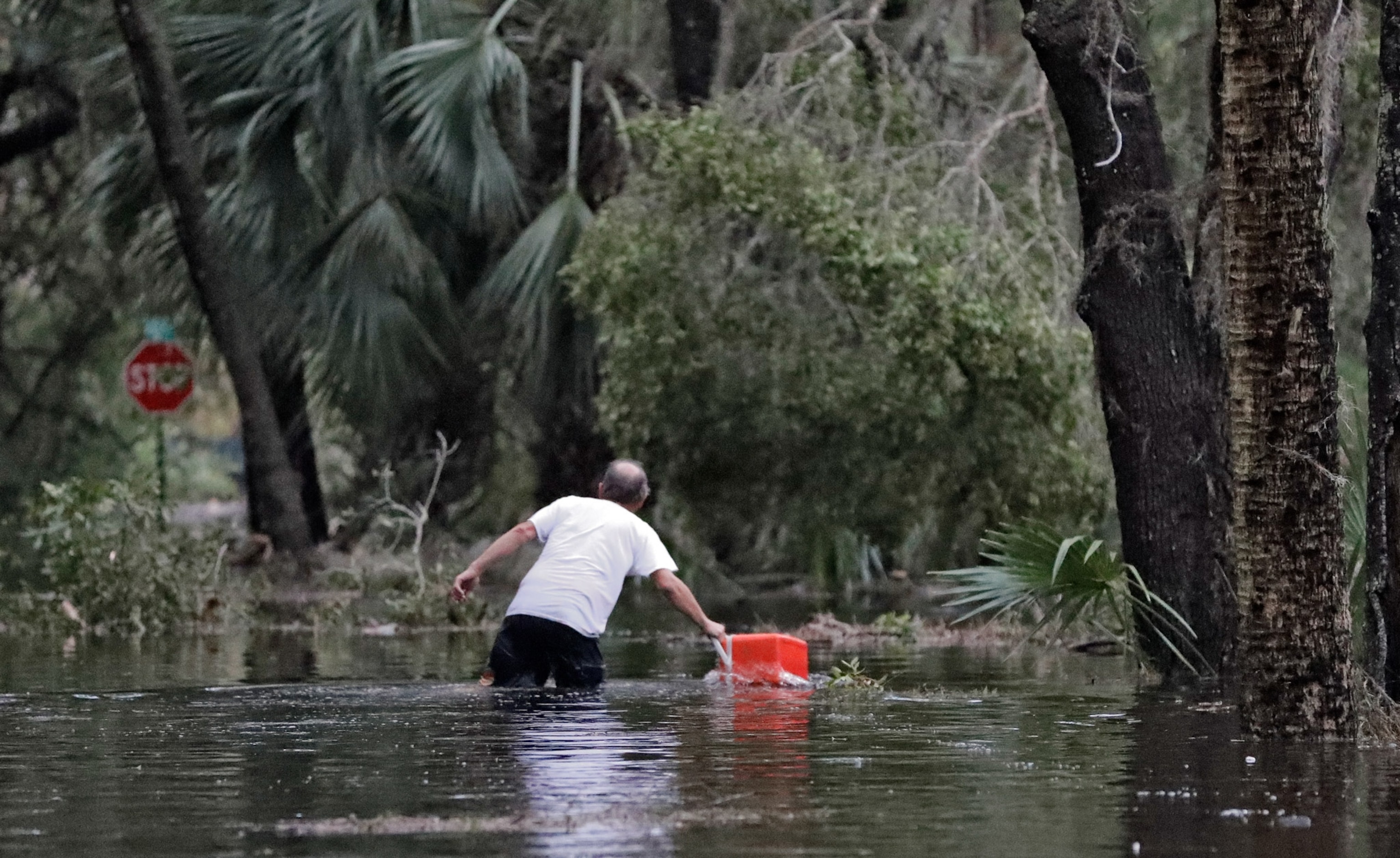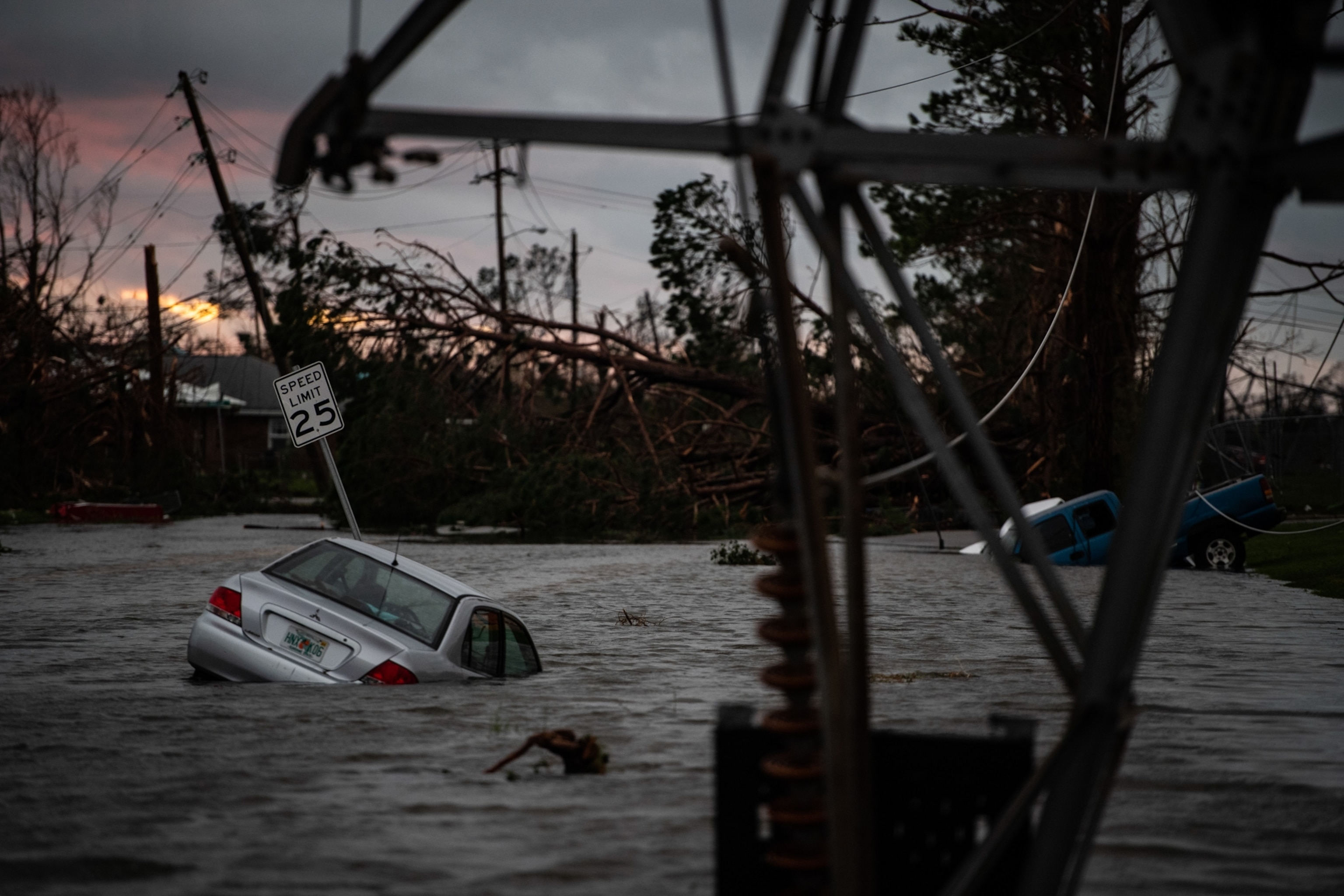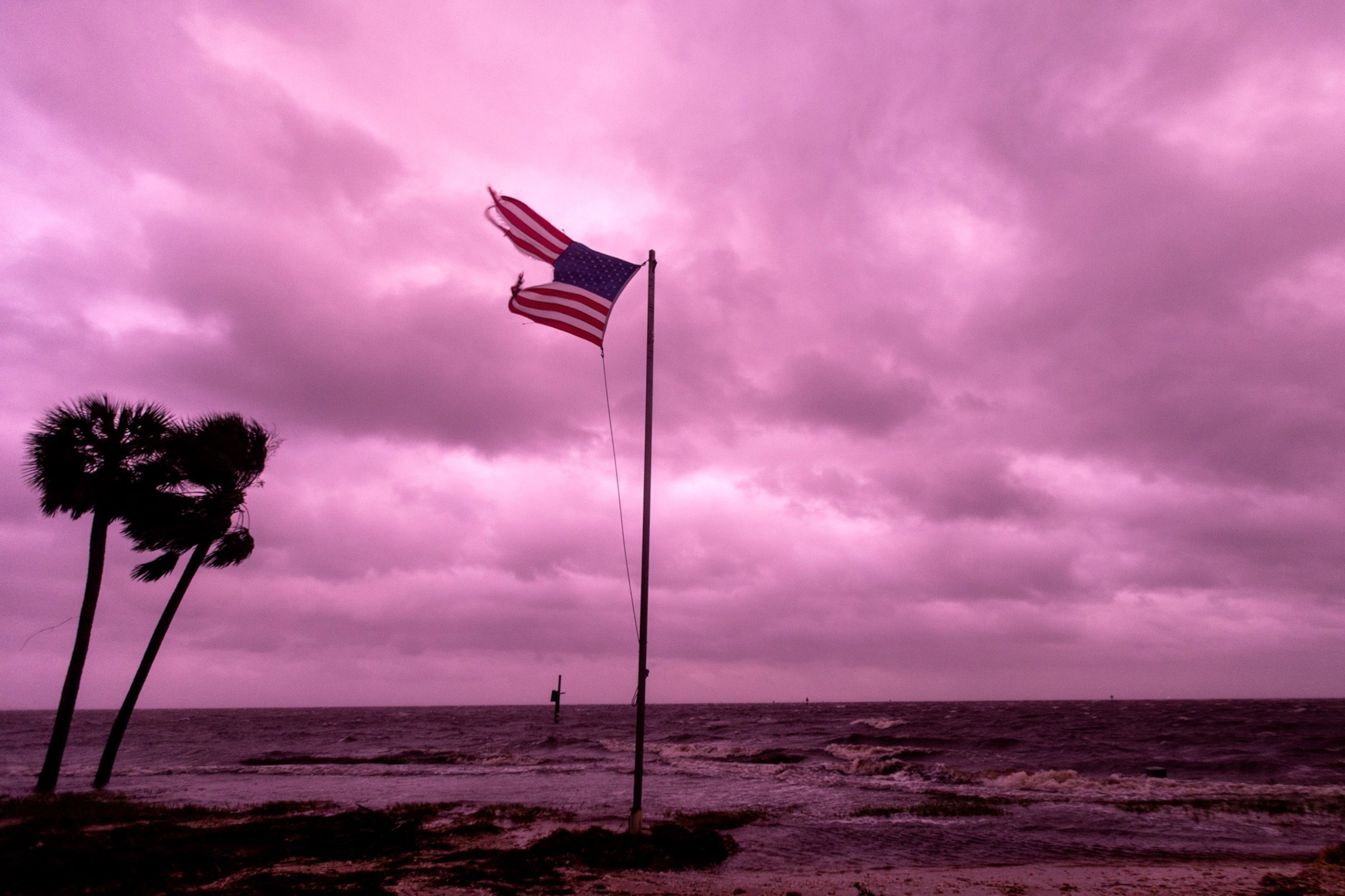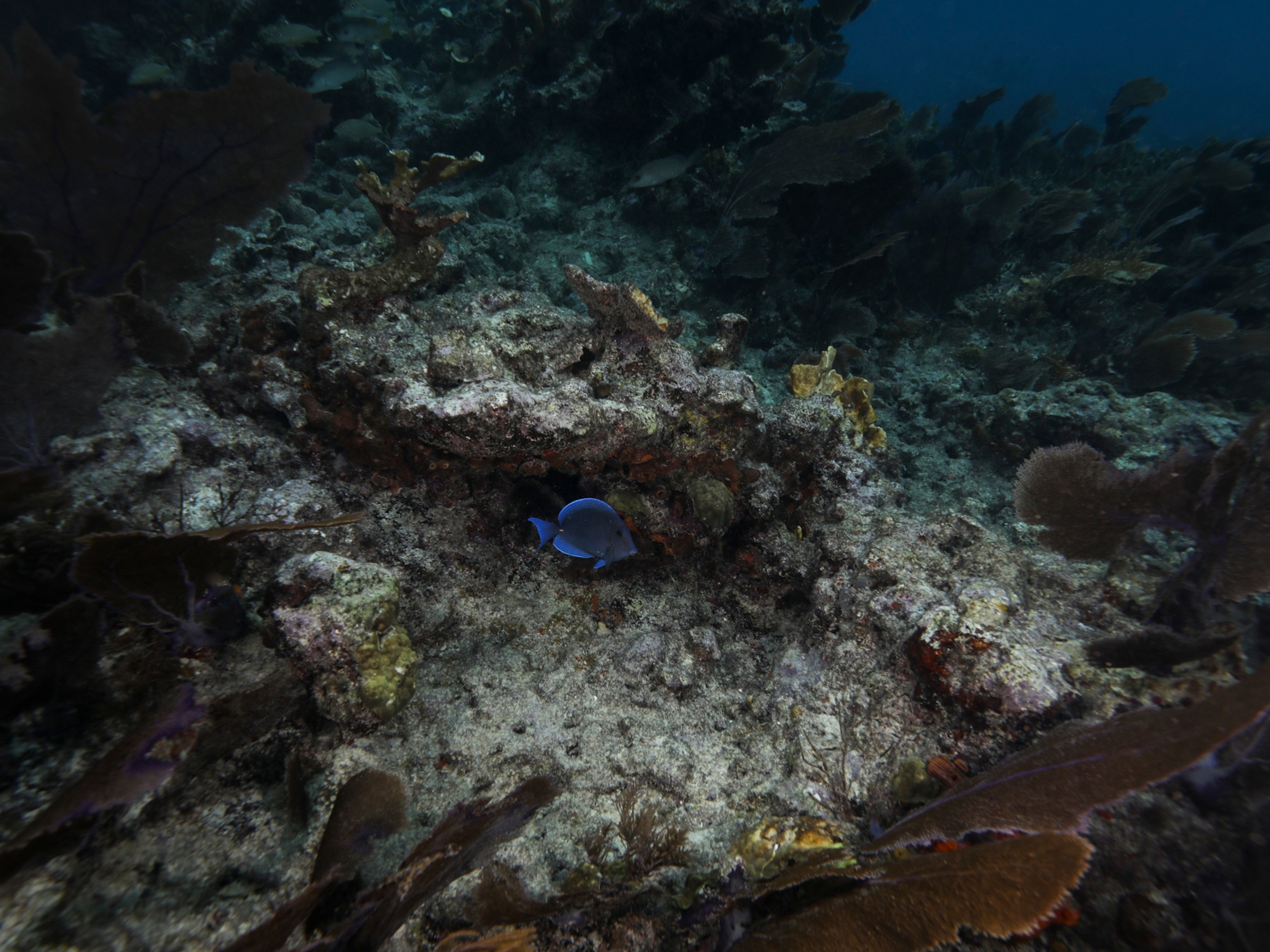Photos show Hurricane Michael's historic strength
As the storm moves away from Florida, residents are finding uprooted trees, roofless homes, and neighborhoods in ruin.
Over its lifecycle, a hurricane can expend more energy than an atomic bomb, and what they leave in their wake can look like the aftermath of war.
Hurricane Michael, which hit the Florida Panhandle as a category 4 storm early Wednesday morning, is no exception. The storm is being described as historic and record-breaking—it's the strongest hurricane to ever strike the Gulf Coast of Florida. At least 11 people from Florida to Virginia have been counted dead as a result of the storm.
A deadly storm surge also accompanied the hurricane. In some parts of the coast, water rose as high as seven feet.
But it's the winds that distinguished Michael from other hurricanes that have recently struck the U.S. At its peak, Michael had sustained winds of 155 miles per hour. Residents riding out the storm posted videos online showing large trees being uprooted from the ground and roofs being torn off homes.
Photos taken in Panama City, near where the eye of the storm passed, show proof of what historic storms are capable of leaving behind. Residents are finding homes without roofs and others completely in shambles. Uprooted trees, personal belongings, and building walls are strewn in streets.
Throughout the end of the week, Michael, a tropical storm as of Thursday morning, will move over the Carolinas and parts of Virginia, where it's expected to dump rain on a region still coping with the effects of last month's Hurricane Florence.

